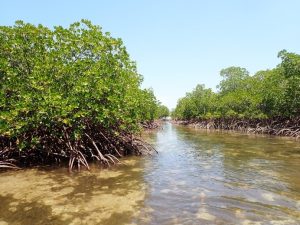 Researchers at the University of Sydney School of Life and Environmental Science are using Pyroscience underwater long-term pH and oxygen sensors to help understand the impacts of climate change on coral reefs.
Researchers at the University of Sydney School of Life and Environmental Science are using Pyroscience underwater long-term pH and oxygen sensors to help understand the impacts of climate change on coral reefs.
One of the best ways to understand the impacts of climate change on coral reefs, such as changes in pH and temperature, is to compare locations where corals are growing in optimal present-day conditions and locations where marginal corals are growing in predicted future conditions.
The researchers are using the “natural laboratory” provided by mangrove ecosystems to understand the impacts of climate change because corals and other invertebrates often live on or near the roots of mangroves, despite unfavourable conditions. They are testing how mangrove habitats exhibit high and variable fluctuations in water chemistry, which may increase the capacity of corals to acclimate to stress. For instance, shading from mangroves can reduce coral bleaching.
The AquapHOx sensors will be deployed from June across multiple sites from a gradient of mangrove to reef influence where the information will be used to determine what aspects of seawater chemistry differ between mangrove-corals, mangrove-adjacent corals, and isolated coral reefs. This project will help reveal whether there are spill-over effects of mangrove systems on adjacent coral reefs and provide critical information on the water chemistry that corals experience in and near mangrove systems.
The AquapHOx sensors are designed for long-term monitoring in marine environments and are the perfect choice for the University of Sydney study. HydroTerra is pleased to have provided the units and look forward to the findings of this important study.
Find out more about HydroTerra’s range of AquapHOx sensors here.






